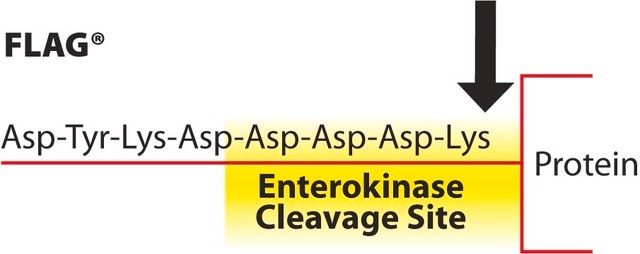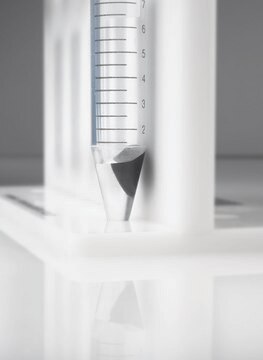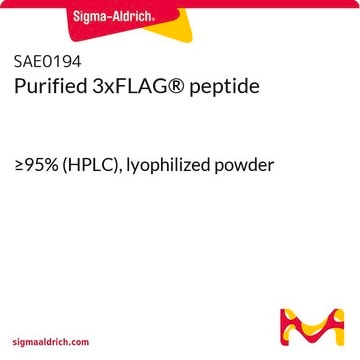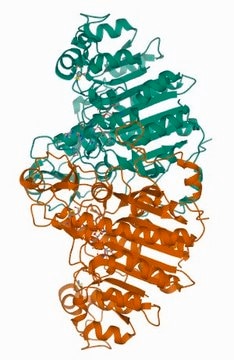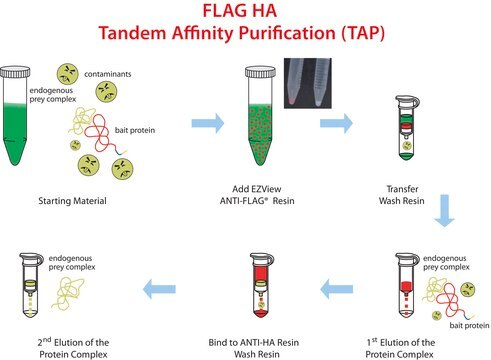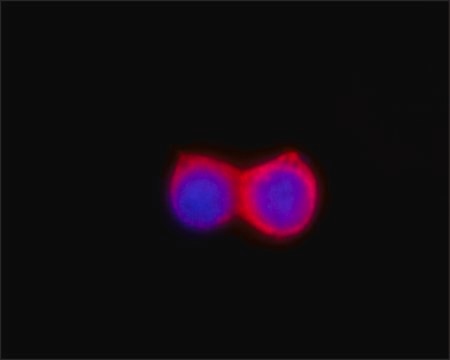F3290
FLAG® Peptide
lyophilized powder
Synonym(s):
Asp-Tyr-Lys-Asp-Asp-Asp-Asp-Lys, ddddk peptide, dykddddk peptide
About This Item
Recommended Products
form
lyophilized powder
Quality Level
mol wt
1012.97 Da
shipped in
wet ice
storage temp.
2-8°C
SMILES string
NCCCC[C@H](NC(=O)[C@H](CC(O)=O)NC(=O)[C@H](CC(O)=O)NC(=O)[C@H](CC(O)=O)NC(=O)[C@H](CC(O)=O)NC(=O)[C@H](CCCCN)NC(=O)[C@H](Cc1ccc(O)cc1)NC(=O)[C@@H](N)CC(O)=O)C(O)=O
InChI
1S/C41H60N10O20/c42-11-3-1-5-22(45-36(65)24(13-19-7-9-20(52)10-8-19)47-34(63)21(44)14-29(53)54)35(64)48-26(16-31(57)58)38(67)50-28(18-33(61)62)40(69)51-27(17-32(59)60)39(68)49-25(15-30(55)56)37(66)46-23(41(70)71)6-2-4-12-43/h7-10,21-28,52H,1-6,11-18,42-44H2,(H,45,65)(H,46,66)(H,47,63)(H,48,64)(H,49,68)(H,50,67)(H,51,69)(H,53,54)(H,55,56)(H,57,58)(H,59,60)(H,61,62)(H,70,71)/t21-,22-,23-,24-,25-,26-,27-,28-/m0/s1
InChI key
XZWYTXMRWQJBGX-VXBMVYAYSA-N
Related Categories
General description
Application
Learn more product details in our FLAG® application portal.
Preparation Note
Legal Information
Storage Class
11 - Combustible Solids
wgk_germany
WGK 3
flash_point_f
Not applicable
flash_point_c
Not applicable
ppe
Eyeshields, Gloves, type N95 (US)
Certificates of Analysis (COA)
Search for Certificates of Analysis (COA) by entering the products Lot/Batch Number. Lot and Batch Numbers can be found on a product’s label following the words ‘Lot’ or ‘Batch’.
Already Own This Product?
Find documentation for the products that you have recently purchased in the Document Library.
Customers Also Viewed
Related Content
Protein purification techniques, reagents, and protocols for purifying recombinant proteins using methods including, ion-exchange, size-exclusion, and protein affinity chromatography.
Protein expression technologies for expressing recombinant proteins in E. coli, insect, yeast, and mammalian expression systems for fundamental research and the support of therapeutics and vaccine production.
Our team of scientists has experience in all areas of research including Life Science, Material Science, Chemical Synthesis, Chromatography, Analytical and many others.
Contact Technical Service